Season update: Commercial, sport fishing now open to the north, Monterey Bay may be winding down
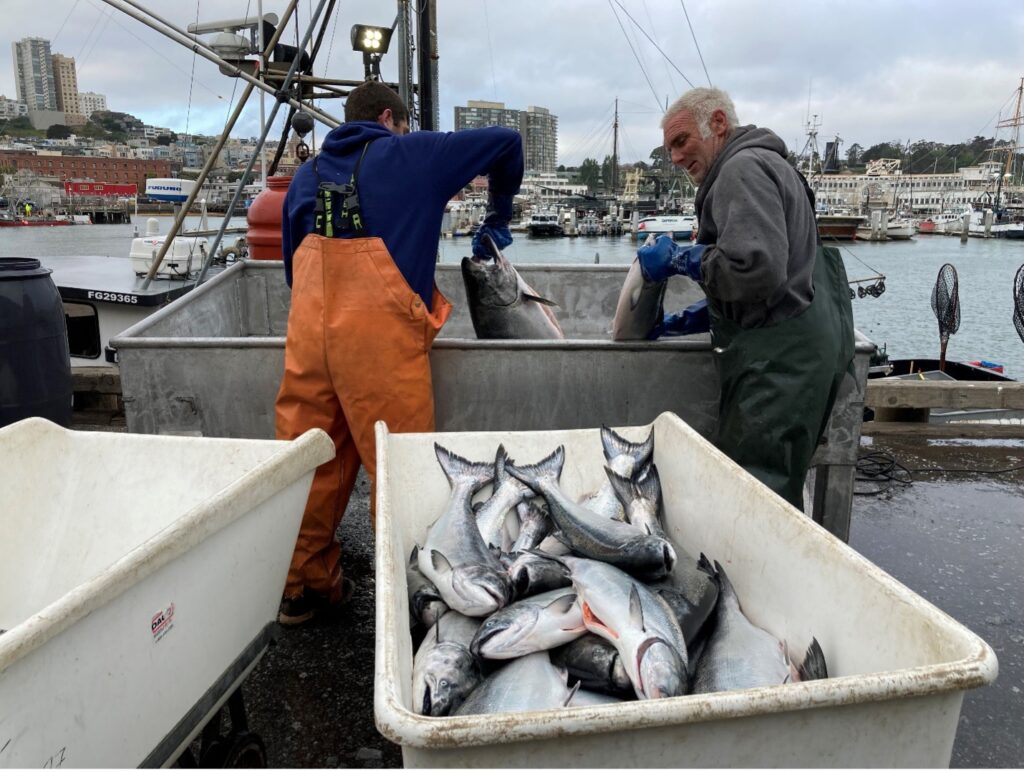
The third commercial opener of the year started June 16th and expanded the area open to fishing up to Point Arena in southern Mendocino County. The first two days were marked by heavy winds that kept many boats tied up but it didn’t take long for the fleet to locate the fish. The commercial boats followed the fish north, past Pt. Reyes, off Bodega and then up towards the northern border of open waters at Pt. Arena. Scores were good for many but the sudden volume of fish depressed the price.
Sport salmon opened in the same waters on June 26. Ocean conditions were tough for many but fish still bit, both out the Gate, along the Marin coast, and north, out of Bodega Bay.
Some have asked why commercial is opening in these waters before sport. Last spring when the seasons were set, both commercial and sport representatives were told to pick their poison in a year where a low number of Klamath salmon in the ocean had to be protected. Both groups had access to the same modeling tool that tells you how many of the Klamath salmon you’re going to catch, depending on where and when you fish. The commercials decided to go for these last two weeks of June out the Gate, Bodega, and above. To “pay” for that they gave up all but five days in July and half of August. The sport representatives opted to instead push the opener above Pigeon Pt. back to June 26, but then keep it open until Halloween. Anyone can participate in the annual season setting process these representatives engaged in so if you’d like a different result next time, get involved.
Hatchery releases wind up, mostly went well
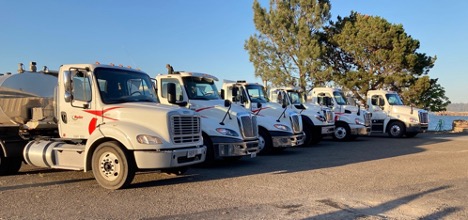
The season for releasing young hatchery salmon is over. Now they are hopefully out in the ocean getting lots to eat and getting bigger by the day. By all signs, this year’s releases should have done very well. Unlike releases of the past, this year’s mostly followed the two day on, five day off schedule whereby any release site was rested for five days after two consecutive days of receiving and releasing fish in order to throw predators off. In addition, new release sites in the western parts of SF Bay, known to offer much higher survival rates, were used this year. The state hatcheries trucked all of their fish and the federal Coleman hatchery trucked their final 900,000. Coleman, to its credit, released a significant number of its fish in mid-March when conditions in the Sacramento River were still relatively ok for salmon survival. They also trucked 180,000 fish 80 miles downstream of the hatchery for an experimental release being done in partnership with GSSA. On top of it all, the northwest wind blew out on the ocean, creating upwelling and stoking the food chain, the way it’s supposed to.
All of the above should add up to a lot of 20”, two year salmon next year and a lot of adult salmon in 2023. There was at least one reported glitch that occurred when an estimated several hundred thousand trucked salmon died shortly after being released into a net pen. Various theories have been expressed on the source of the problem but we aren’t aware that the cause has been definitively nailed down.
Hot rivers, winter run already dying pre spawn
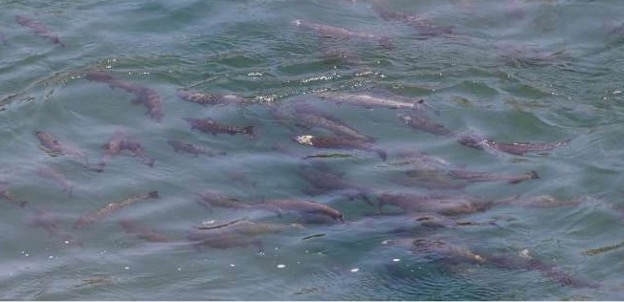
CDFW monitoring of adult winter run in the upper Sacramento River documented the loss of many from effects of the hot river water in May before the fish spawned. Others, while not dead, were observed in highly stressed and unhealthy condition. The water cooled slightly in June but some adult fish continued to die before spawning. These conditions were forecast by the National Marine Fisheries Service, which noted they’ll persist through the summer and fall, costing us all or most of this year’s natural spawned salmon. We’ll be relying on hatchery salmon for the next few years. The damage could have been reduced if water managers had retained more water to keep the rivers cooler, but they refused GSSA and others’ repeated requests to do so.
Another heat-stressed river, the Klamath, is likely to cause further restraints on the ocean fishery in the years to come. That’s because this year’s baby salmon mostly died in the river, unable to survive the heat and get out into the ocean. Their loss will translate into major measures over the next several years to avoid catching any possible survivors. We saw a similar situation in the outmigration from the Klamath in 2002 which resulted in a highly constrained commercial fishery in 2006 as well as less time and area open to ocean sport salmon fishing.
Seafood extravaganza coming up
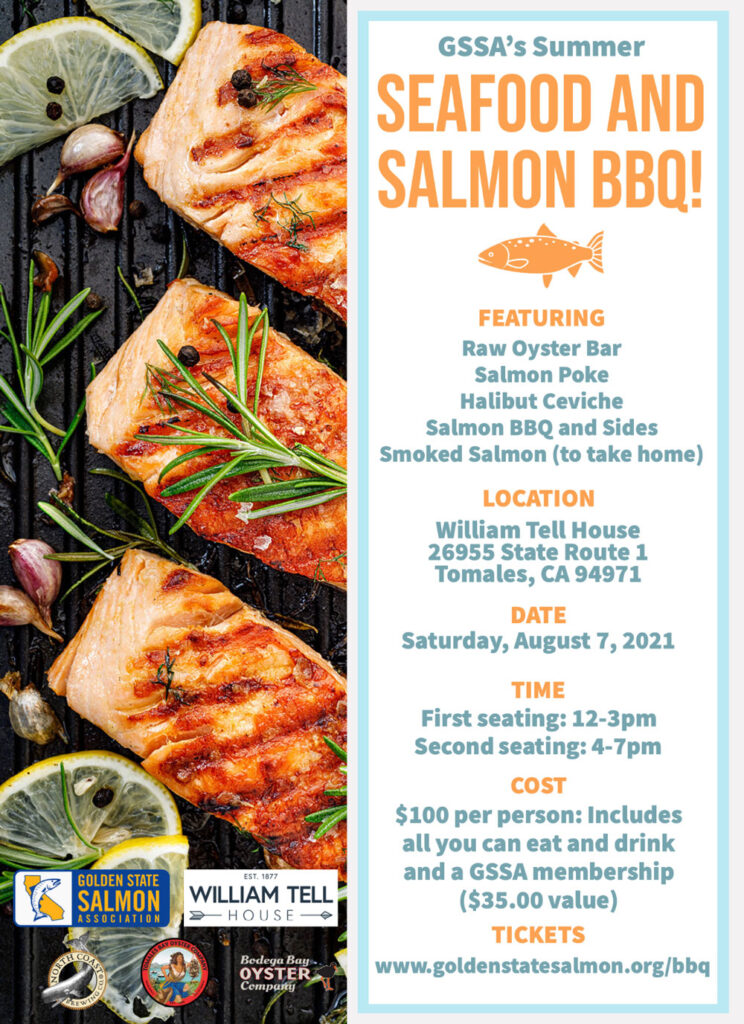
GSSA will host a seafood extravaganza fundraising event on August 7 at the William Tell House in Tomales.
150 pounds of fresh local caught California king salmon will anchor the event to provide a grilled salmon main dish, prepared by owner Ted Wilson’s expert crew. A special salmon poke will be served. Ceviche made with the best wild halibut will help warm up the crowd along with fresh oysters. Everyone will be sent home with a vacuum sealed packet of smoked salmon.
Wine and beer are included in the ticket price (cocktails for purchase). The event will also provide a chance to compare post-covid stories (fishing stories allowed too) while raising funds to support GGSA’s work to keep abundant salmon stocks in California. Several incredible prizes will be raffled off. Tickets can be had here.
GSSA makes a bid to have Coleman Hatchery restart surplus fry program
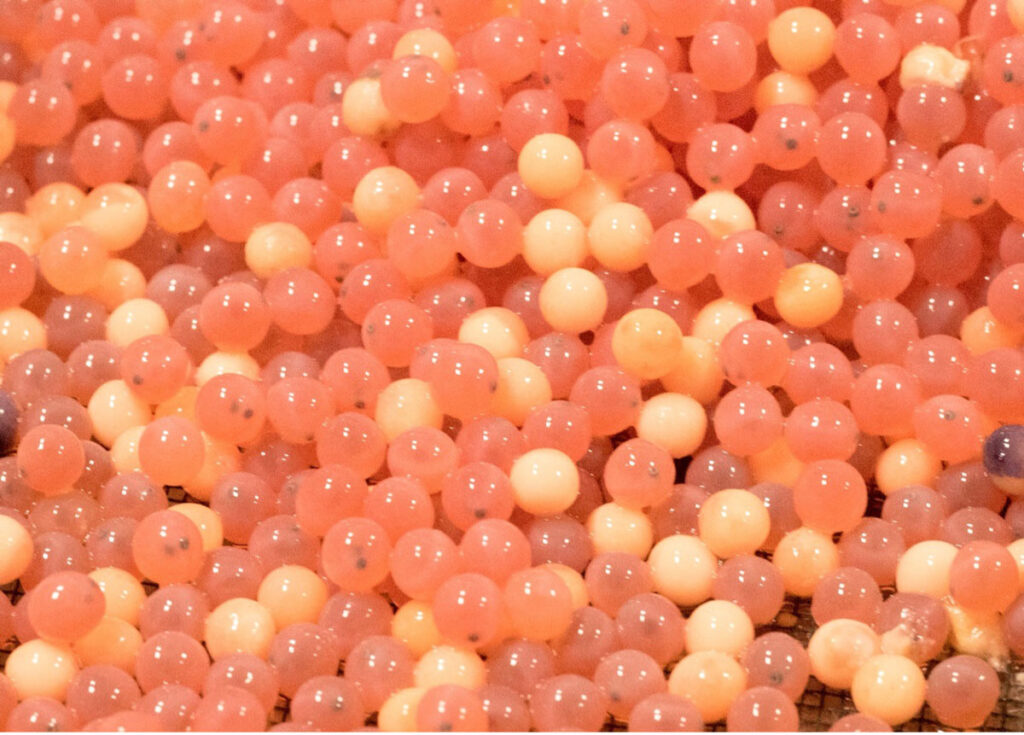
GSSA has asked the US Fish and Wildlife Service to restart a program that put more fall run salmon into the upper Sacramento Basin until it was discontinued in the 1990’s. The Coleman Hatchery has always taken more eggs (except in the very few years when they weren’t available) than needed to match their target salmon production number. Hatchery managers want extra in case disease causes losses. In many years, after being assured of hitting their production number, Coleman staff will freeze any surplus incubating eggs, which kills them. In the past, those eggs would be hatched and the small fry would be released directly into Battle Creek, where the hatchery is. GSSA has argued that, especially since hot water problems are forecast to kill this year’s naturally spawned salmon, it would make sense to give the area a boost by releasing surplus fry. Many state and federal agencies will have a say about whether and how this proposal can be moved forward. GSSA is working with them all now to win approval.
Putah Creek, drain plug in dam saving a salmon creek

A question that comes up is how can our salmon survive climate change in the years to come. A hint about the answer can be seen in Putah Creek, which, located as it is west of Davis, should be too warm to support salmon. It isn’t because its water comes from a “drain plug” tunnel through the bottom of Monticello Dam and supplies cold 50 to 55 degree water year-round from the depths of Lake Berryessa. Why couldn’t other dams release cold water the same way? They can. Shasta and Oroville Dams both have “drain plug” tunnels through their base but dam operators generally don’t like to use them because releasing water in this way means it can’t spin the electric generators mounted higher in the dam. Another “aftermarket” fix to get to the colder water in the bottom of reservoirs is a device that draws in cold water at the bottom of the reservoir, upstream of the dam face, and then pushes it through the dam, usually through the electric generators. On Shasta, Whiskeytown, and Folsom dams these are known as temperature control devices. They don’t always work as well as we’d like but they warrant more usage as technology and data allow. Even with climate change, the water at the bottom of these massive reservoirs will hopefully still be cold enough to support downstream salmon runs.
USFWS struggles to deal with obsolete PG&E dam on Battle Creek
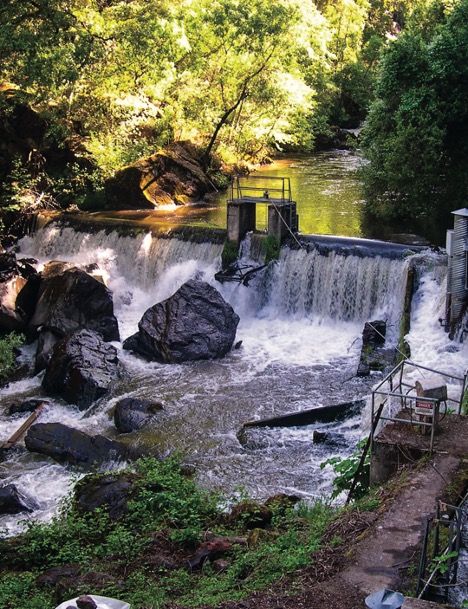
It’s been 20, going on 30 years, since a plan was hatched to restore one of the Sacramento River’s best salmon tributaries, Battle Creek. At over 40 miles long, it once supported big runs of spring, winter, fall, and late fall run salmon that could have numbered more than 100,000. Today only the lower eight miles, from the confluence with the Sacramento River up to the Coleman Hatchery, are available to fall run spawning. The rest of the creek is above a dam at the hatchery. Hatchery staff allows some spring and winter run access to the creek above the hatchery but the fish only have a few additional miles before they encounter house size boulders that block further migration. These boulders are scheduled for removal. Above the boulders is an old PG&E dam called the Eagle Canyon Dam. PG&E recently stated it wants to abandon this small dam and will be required to do some form of decommissioning, with the details still to be developed. Above this dam is one more boulder field barrier (also scheduled to be removed), and then access to miles of high-quality spawning and rearing habitat in one of the last tributaries of the Sacramento that is cold and spring-fed year round. The US Fish and Wildlife Service is working to get the boulders out of the river and to find a final solution to what to do with Eagle Canyon Dam.
Spring run trying to hang on in Butte Creek
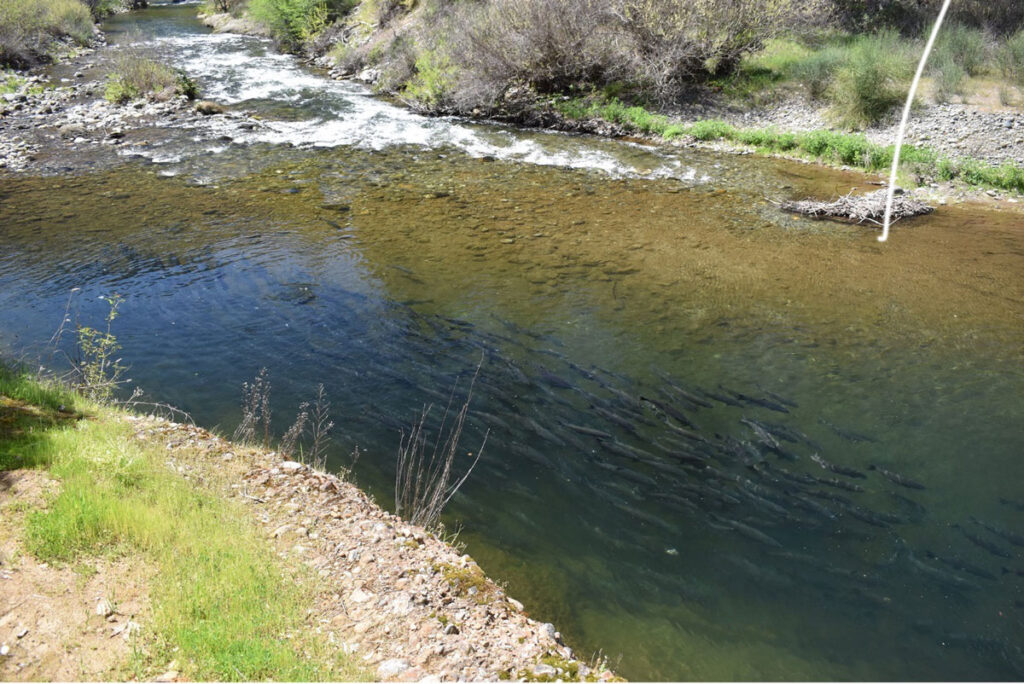
Friends of Butte Creek has reported good numbers of spring run returning to the Sacramento Valley this year. Less clear is what percent of these fish were able to get to upstream waters that will remain cool enough to allow a successful spawn this year. Hopefully spawning conditions will allow at least some reproduction of this special run of wild California king salmon.
Low numbers of juvenile Klamath fish this year mean storm clouds in the future
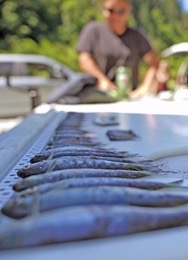
Reports coming out of the Klamath River area suggest that very few, if any, baby salmon survived to the ocean this spring. If true, that means the ocean salmon fishery will likely feel some heavy constraints in the future. The last time something like this happened was in 2002 when massive diversion of upstream Klamath waters to agriculture created lethal conditions for baby salmon. The worst of the resulting pain happened in 2006 when commercial fishing was cut way back to spare the few Klamath four year old adults, which are used to gauge the health of Klamath stocks. These conditions are especially likely to constrain commercial fishing north of Pigeon Point.
On the sport side, some constraints can be expected in a few years, though they won’t likely be as harsh as what commercial will experience. This is because data collected from the fishery shows that recreational ocean salmon anglers take fewer Klamath River fish off the San Mateo to Sonoma coasts than do commercial trollers.
Guys vs Girls Sausalito salmon fishing showdown coming this July
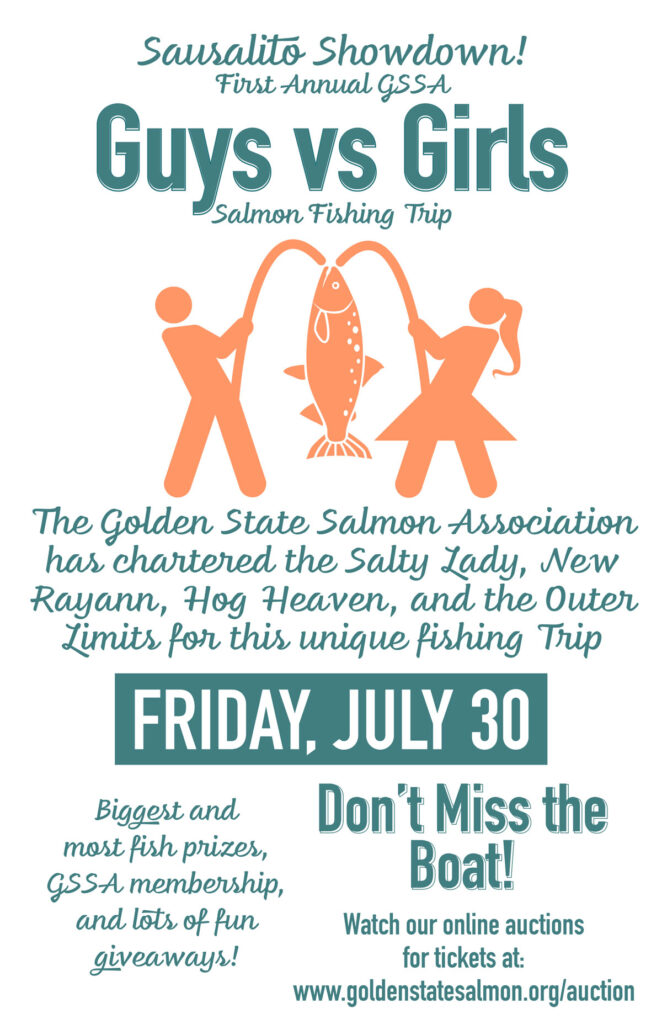
GSSA has chartered four of Sausalito best boats on July 30 for a day of friendly competition pitting guys against gals to see who can catch the biggest and most salmon. There are 60 spots total, half for the guys, half for the gals, on the Salty Lady, New Rayann, Hog Heaven, and the Outer Limits. There are 15 spots for each group left. Get your ticket here.
With barbless hooks, finesse can mean the difference between landing that big one or not. Who’s got more finesse, the guys or the girls? Come along to find out.
